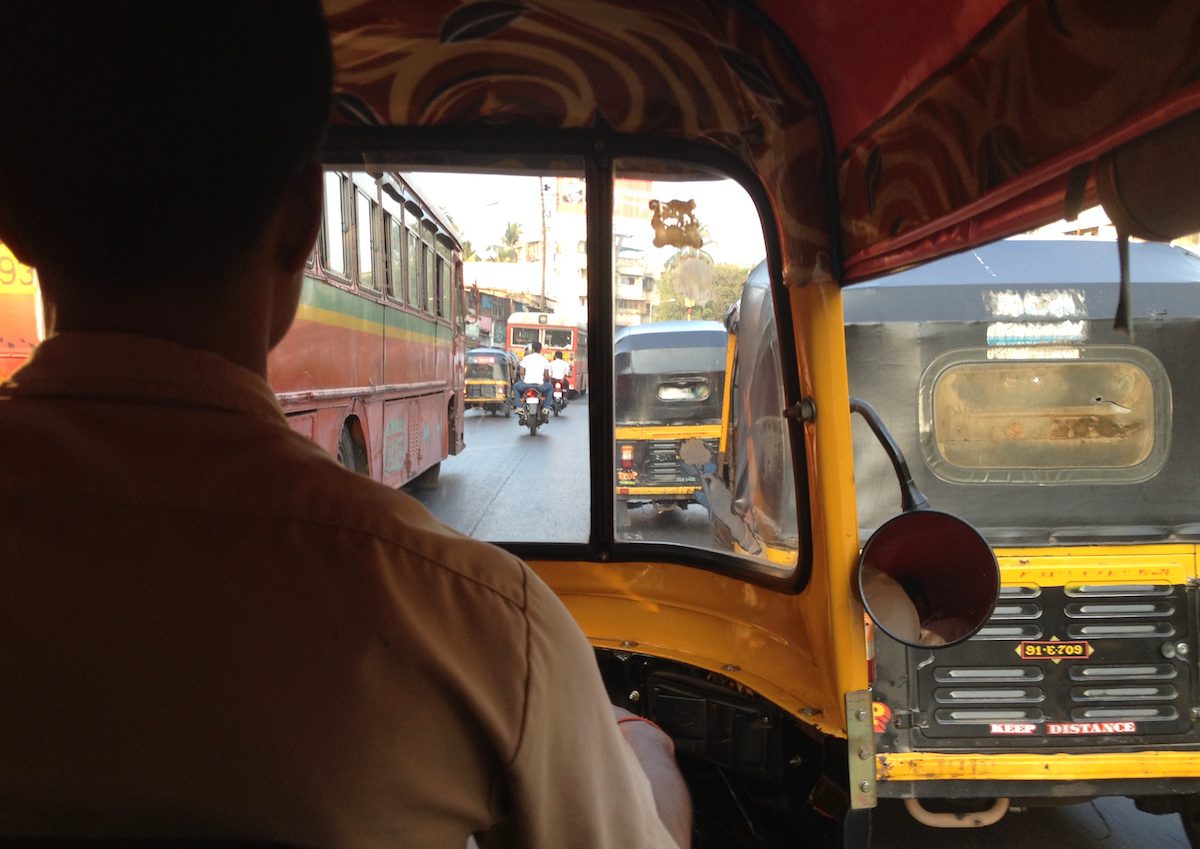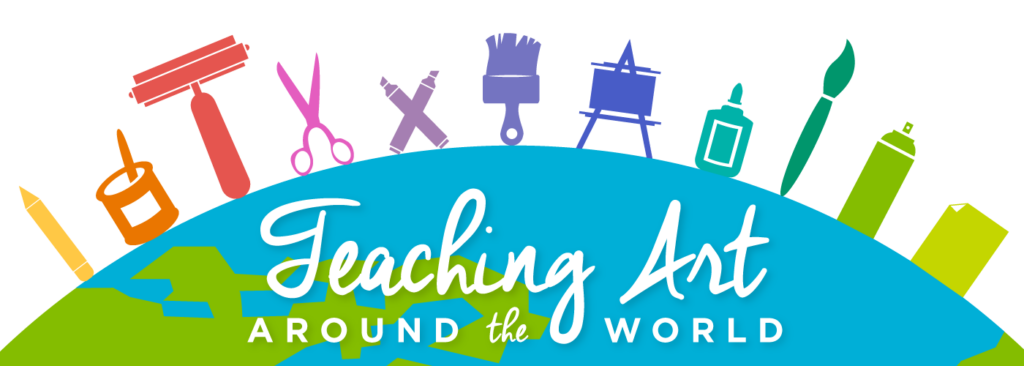
Welcome to the fourth installment of our Teaching Art Around the World Series. See the others here: Norway, Thailand, Ethiopia.
Today, we’re sharing the story of Amy Garrett, an art teacher currently living and teaching in Shanghai, China with her husband and young son. However, today Amy will be sharing about her time spent teaching and working in Mumbai, India at The American School of Bombay.
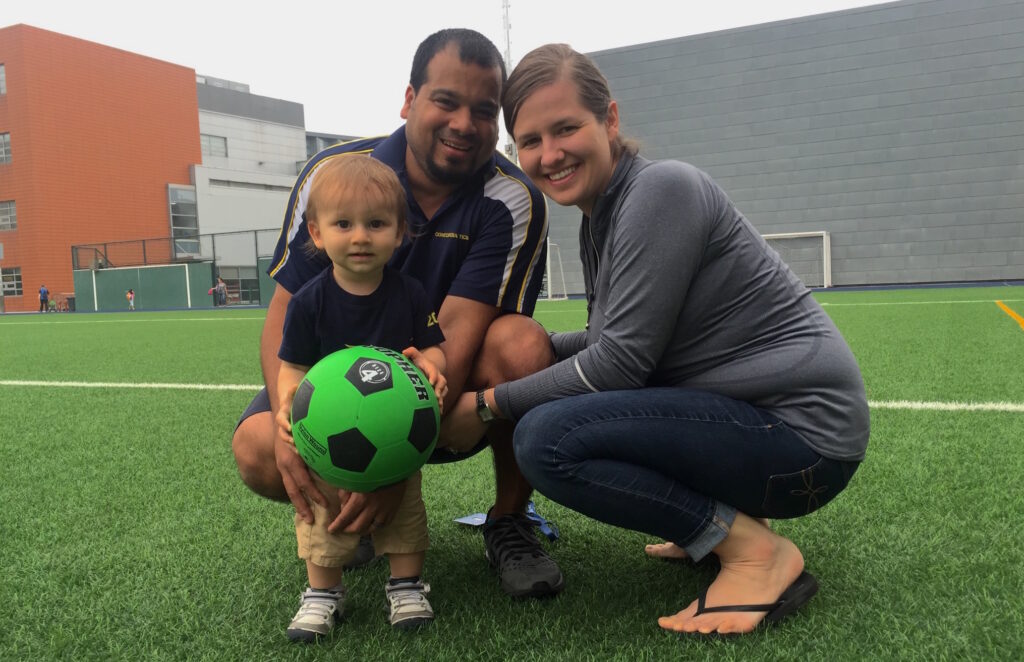
Read on to hear about the supportive role of teaching assistants, the reason Amy feels it’s so important to include student voice in her curriculum, and why crossing the street takes major guts.
Amy’s Background
Technically, I’m “from” Iowa where I was born and raised. My family and a big part of my heart remain there. However, I’ve also left parts of my heart sharing art in Guatemala, Chile, Egypt, India, and now, China.
I lived in Mumbai, India for three years from 2011-2014. There I worked at the American School of Bombay as the Elementary Art Teacher for grades 2-5.
On Teaching in India
About Amy’s School
The American School of Bombay is an international school in Mumbai that is known for its innovative teaching and learning practices and its 21st Century learning environments. It serves about 750 students in preschool through grade 12 from over 50 countries. Many of the families work for global corporations or are diplomatic families.
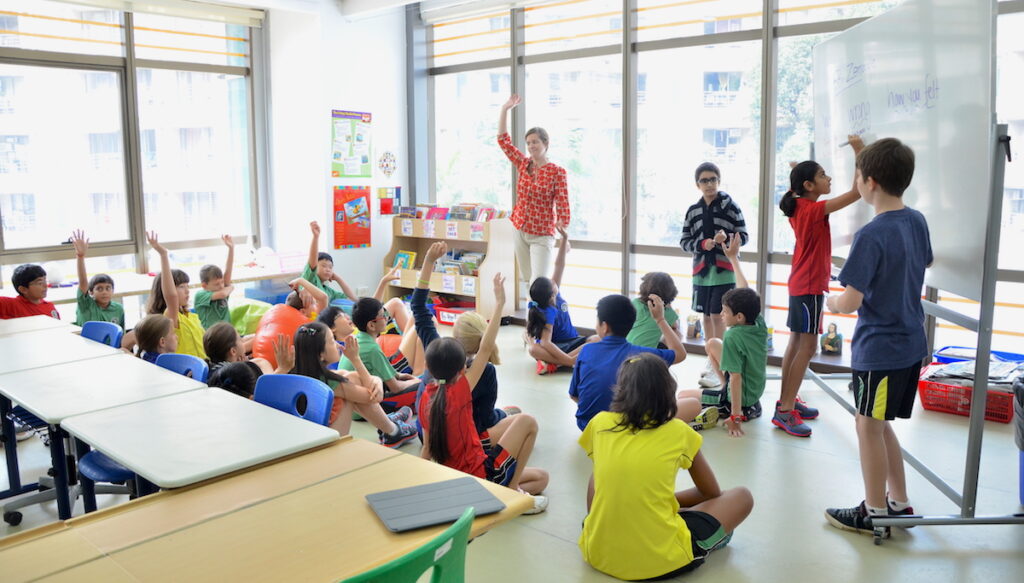
I am biased, but I always tell people that I have been so blessed to work at the American School of Bombay. ASB is not only well known in India but throughout all of SE Asia and the entire international teaching circuit. ASB publishes regularly, hosts annual international educational conferences, and is a huge supporter of PD for its staff members. It was a privilege to work there.
About Amy’s Teaching Position
I taught grades 2-5 in the Primary Years Program (PYP), which is the elementary branch of the International Baccalaureate (IB) program. It’s a highly-collaborative curriculum that focuses on developing transdisciplinary skills and was a heavenly way to teach and integrate art into other subjects.
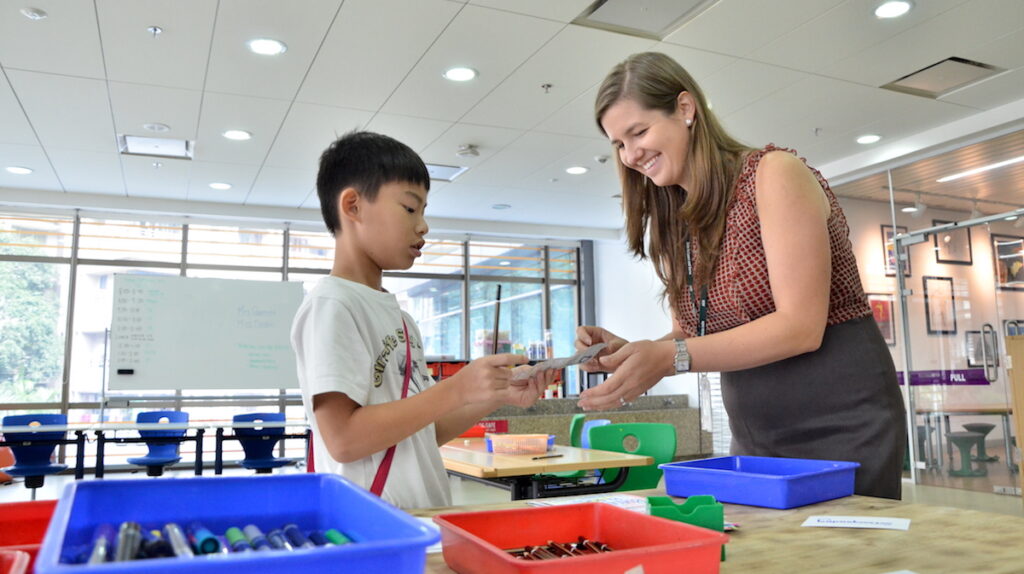
My classes were 50 minutes long, and my schedule varied widely from having two classes per day all the way up to eight. Planning periods were often filled with meetings with tech coaches, grade level teachers, and curriculum coaches.
A Unique School Design
The school I worked at was designed a little differently than most. There were no walls, and each grade level had its own floor complete with its own library, cafe, and more.
Amazing Support for Teachers and the Arts
ASB is unique in that it has a dedicated Research and Development Department as well as a Teaching and Learning Team. I was involved in both groups which included researching, prototyping, and piloting new educational trends, ideas, and technologies.
In addition, one of the reasons I love and chose to teach overseas is the high level of respect and value placed on the arts by all members of the school community. Both administrators and parents were highly supportive and student work was highlighted and displayed constantly. If you’re interested, you can take a peek at the last art show I held there by clicking here.
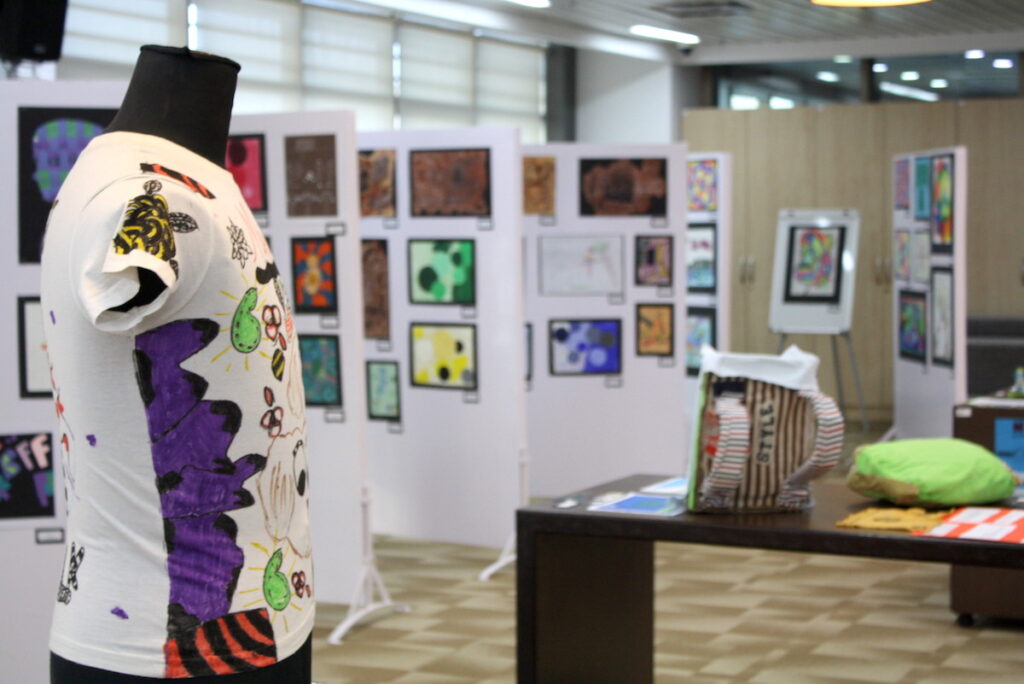
A Highly-Collaborative Atmosphere
I would often be part of grade level planning meetings and meet with other specialists to plan school-wide events and units. We frequently checked in with each other during these projects to assess progress and plan the next steps. In addition, I had access to technology coaches to help me meaningfully implement new technology into the classroom. With their help, my students got to experience things like 3D pens and plenty of iPad apps in the art room.
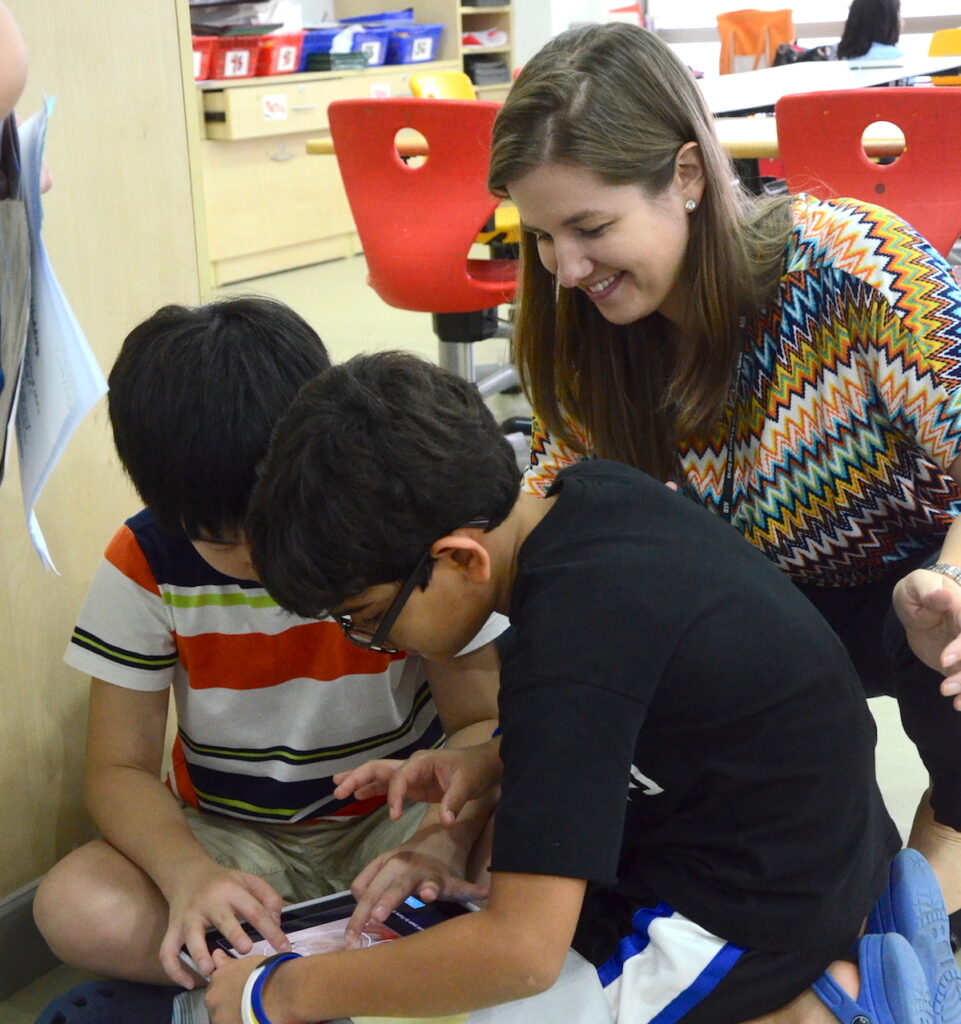
Teaching Assistants
Teaching assistants are a blessing and quite common in international schools. Their role varies from school to school, but at ASB they are valued, qualified teachers. My teaching assistant was a professional artist from Mumbai who had international painting exhibits and continued to practice her own art as she taught. In classrooms, teaching assistants teach alongside the teachers and have a very active role in the children’s education.
Challenging Teaching Norms
In India, the general teaching approach is rote and memorization-based. There are many art classes where students follow the leader, copy, and repeat. As a result, many students are highly-skilled at detailed replication.
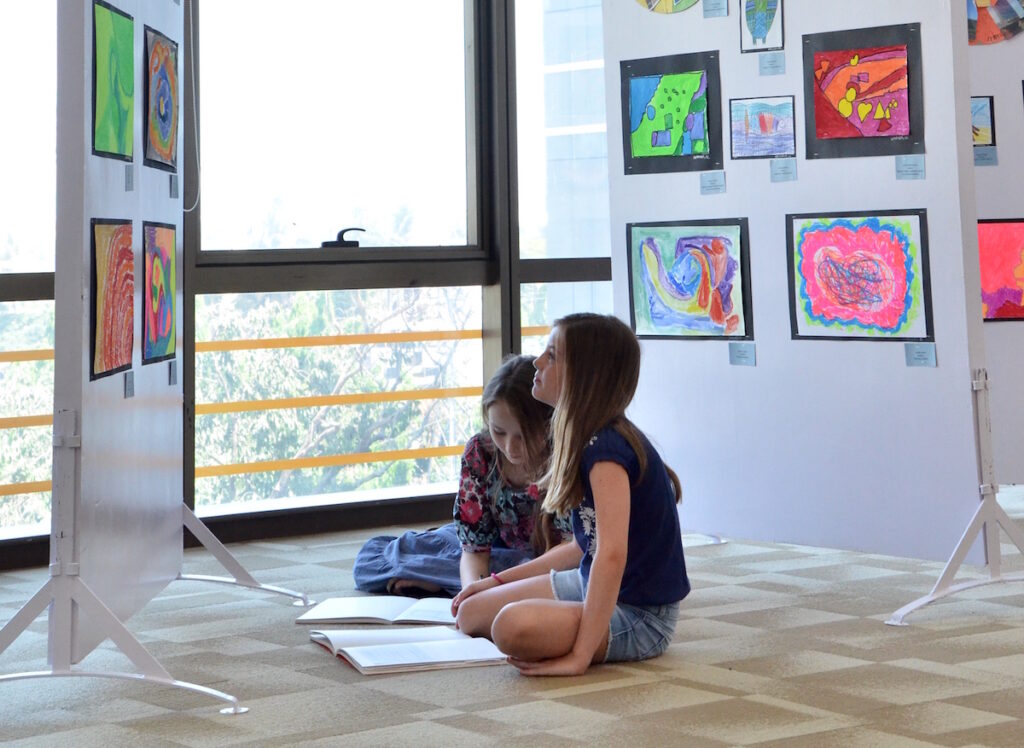
My approach to teaching, which includes stressing creativity and idea generation, was certainly different for many students and their parents who had grown up in India. That said, it usually didn’t take too long for students to adapt. Some things I did to help students get out of their comfort zones were stressing the importance of brainstorming and making mistakes, making daily sketchbooks “stress-free zones,” and occasionally hiding the erasers.
Working with Third Culture Kids
The term “third culture kids” refers to children that are raised in a culture other than their parents’ during their developmental years. This term applied to many of my students. Therefore, some of my favorite projects involved students sharing their personal identities or parts of their cultures. For example, we looked at the early mark-making of cave art, and then students drew things that represented their own lives. There were many flags, different types of food, airplanes, and passports utilized in their work.
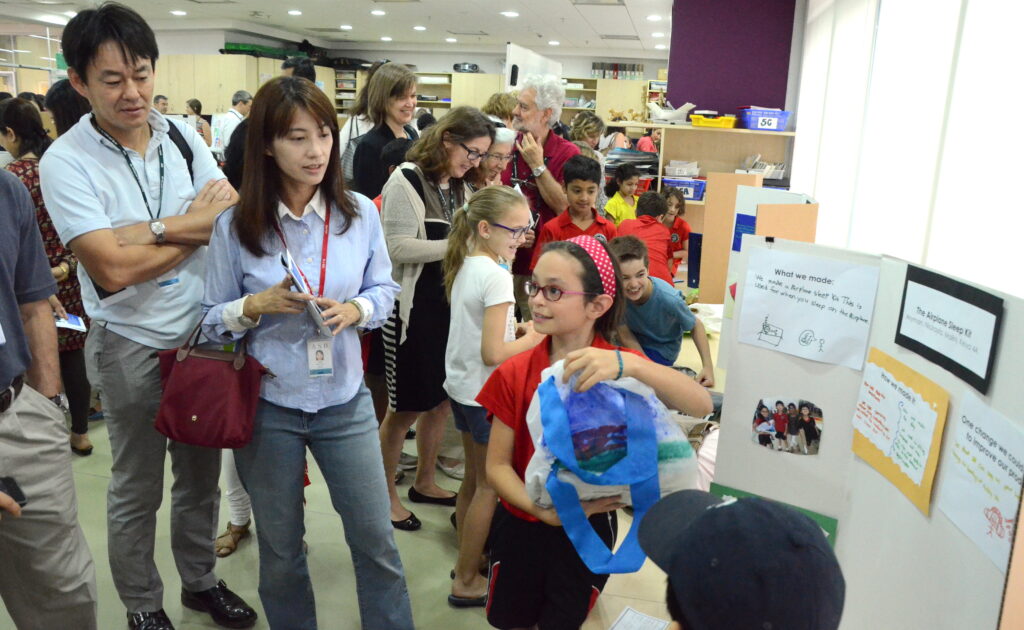
I also did a PBL unit with grade 4 where the challenge was to create a functional object for air travel out of recycled materials. For these kids, flying was an ordinary event. They designed toys, comfort items, and even practical in-flight features to make a trip go more smoothly. They shared these prototypes at a community art fair with parents, teachers, and community members (seen above). We even had a corporate airline executive attend to give feedback and comment on their ideas.
On Living in India
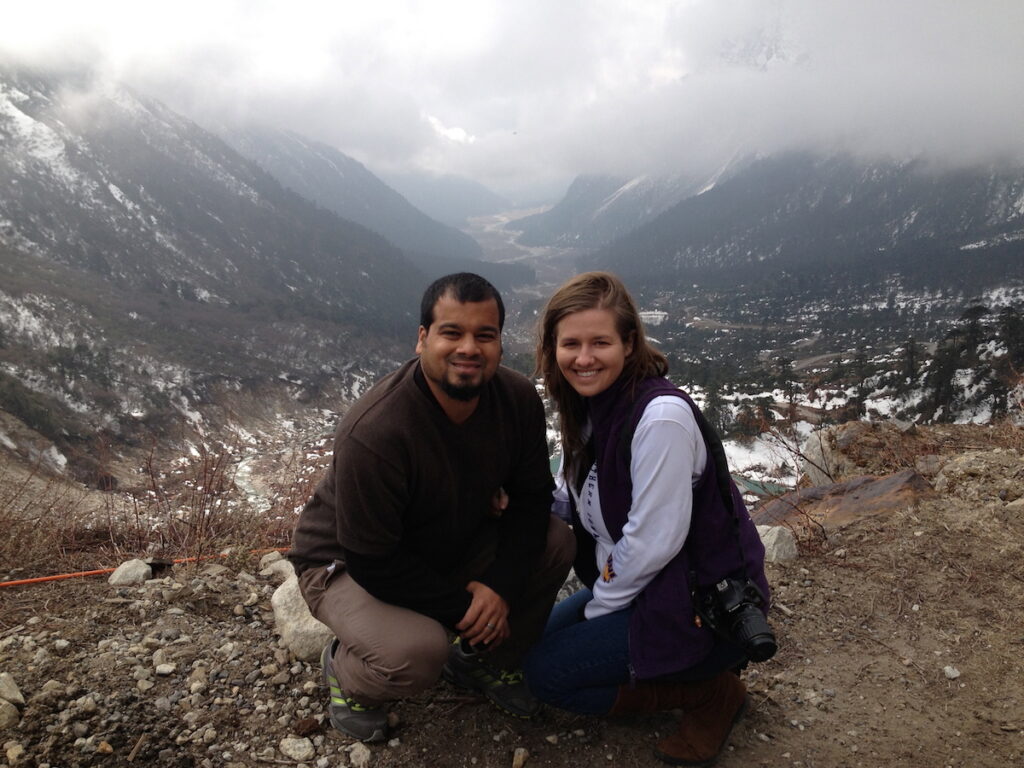
I loved the little neighborhood friendships in Mumbai. Running errands, riding in a rickshaw, grabbing street food: When you teach overseas, you try and get out to immerse yourself in the culture to learn and experience as much as you can. I loved taking advantage of weekends and holidays to travel the country and region. Above is a photo of my husband and I visiting the Himalayan mountains!
Embracing the Chaos
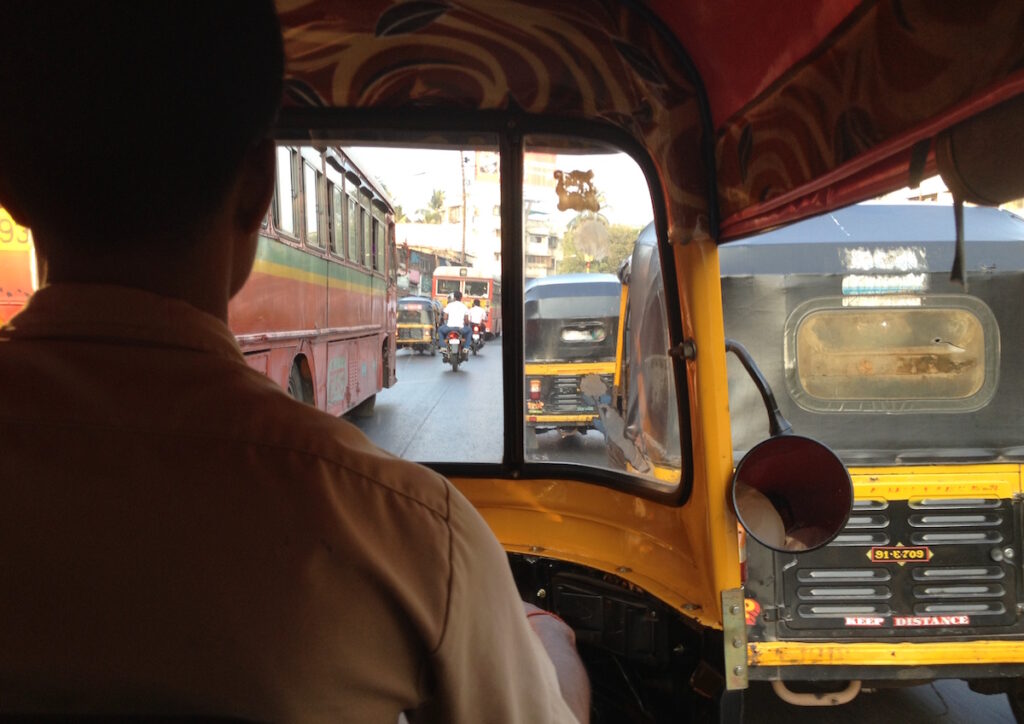
Having experienced traffic, crowds, dirt, and more in Cairo, I was at the perfect point in my life to jump in with open arms and embrace the chaos. I’ll never forget crossing the road (which in India means weaving and dodging traffic) my first week there with several other new colleagues only to look back and see them all hovering together on the sidewalk afraid to strike out.
The Warm Culture
Culturally, India is warm and friendly. It’s easy to strike up conversations with people you meet on the street, and people will open their homes and arms to you for a cup of chai upon meeting. I love the familiarity of knowing shopkeepers and vendors. In some ways, it feels very much like small town Iowa!
Experiencing the Extremes
One of the hardest things, hands down, about teaching in India, was witnessing the extremes. Many people have heard about India’s poverty, but few realize the insane amount of wealth that’s also there. Many times, poverty-stricken and wealthy areas are right next to one another.
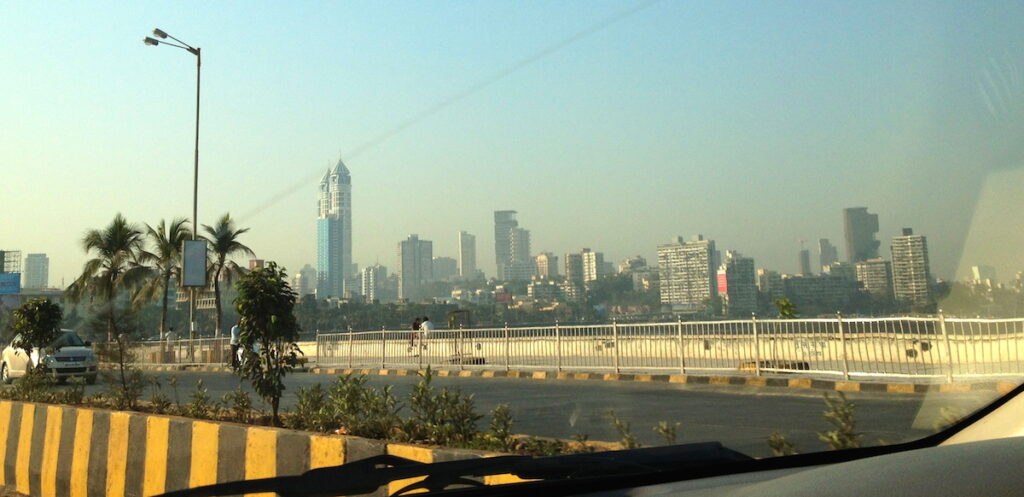
Getting used to witnessing that dichotomy takes time and takes an actively reflective person to sort through everything they see and experience.
Apartment Living
Most international schools will provide you with housing or at least supply a housing stipend. Apartment life is very common in big cities, as there is literally no land for housing, and Mumbai is one of the most densely-packed cities in the world. We were provided a very nice apartment there and felt safe with guards at the doors and guards monitoring all traffic in and out of the building 24/7.
Delivery Services
Something that might surprise you is that you can have EVERYTHING delivered. We had an egg guy, a bread guy, a guy that came to take and iron our clothes before a big trip, the list goes on! All we had to do was lean out our window and call down to the guards.
Personalized Help at Home
In India, it’s commonplace to have one or more people work for you at home to clean, do laundry, cook, and more. We were able to hire someone to clean and cook for us 6 days a week for just a few hundred dollars a month. Needless to say, I got quite spoiled.
Delicious Food
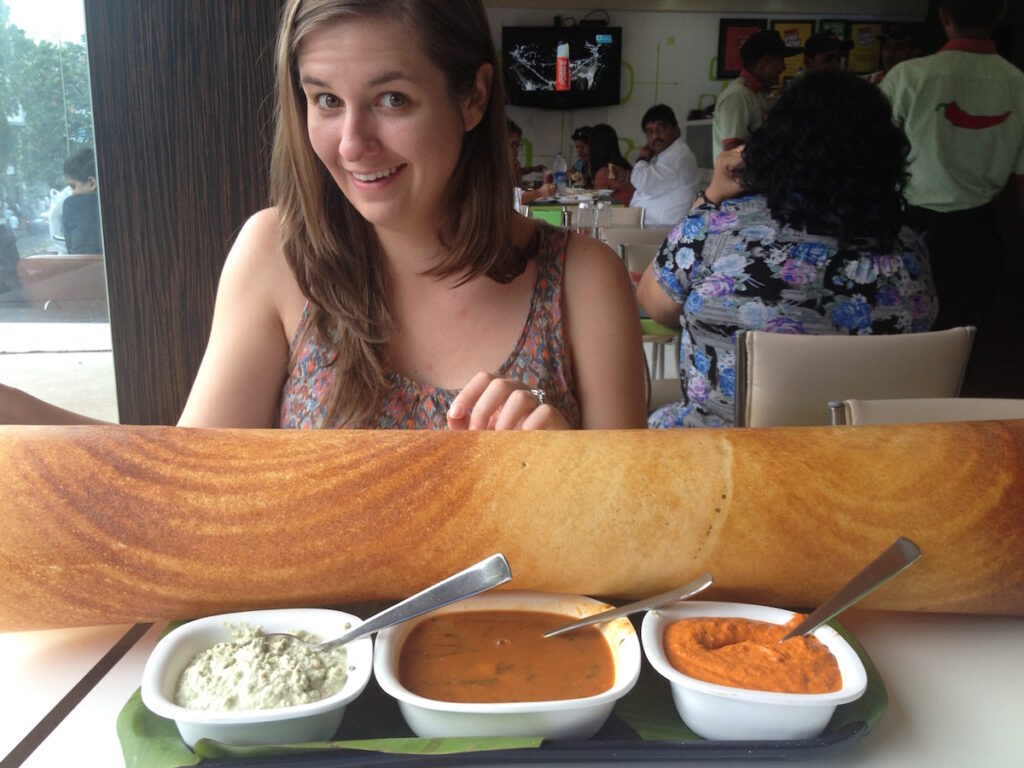
Food in the U.S. feels so bland after living and eating my way through India! The spices are cooked first so the flavors seem to explode in your mouth. I was surprised at how my palette quickly grew accustomed to spicy foods. I once attended a wedding where waves of waiters would come by and dish up dozens of different things: vegetables, dals, meats, prawn crisps, and more. It was all served on banana leaves and all eaten by hand. It was like the most delicious assembly line ever.
On Teaching Abroad

Certainly, the hardest thing about being overseas is being far from family. However, I would DEFINITELY recommend it. There are so many great schools with amazing resources. It provides you the opportunity to travel and gain valuable experiences. Why not give it a try!?
Thank you so much, Amy!
Tell us, have you ever been to India? What was your experience like?
What is your favorite part about traveling?
Magazine articles and podcasts are opinions of professional education contributors and do not necessarily represent the position of the Art of Education University (AOEU) or its academic offerings. Contributors use terms in the way they are most often talked about in the scope of their educational experiences.
